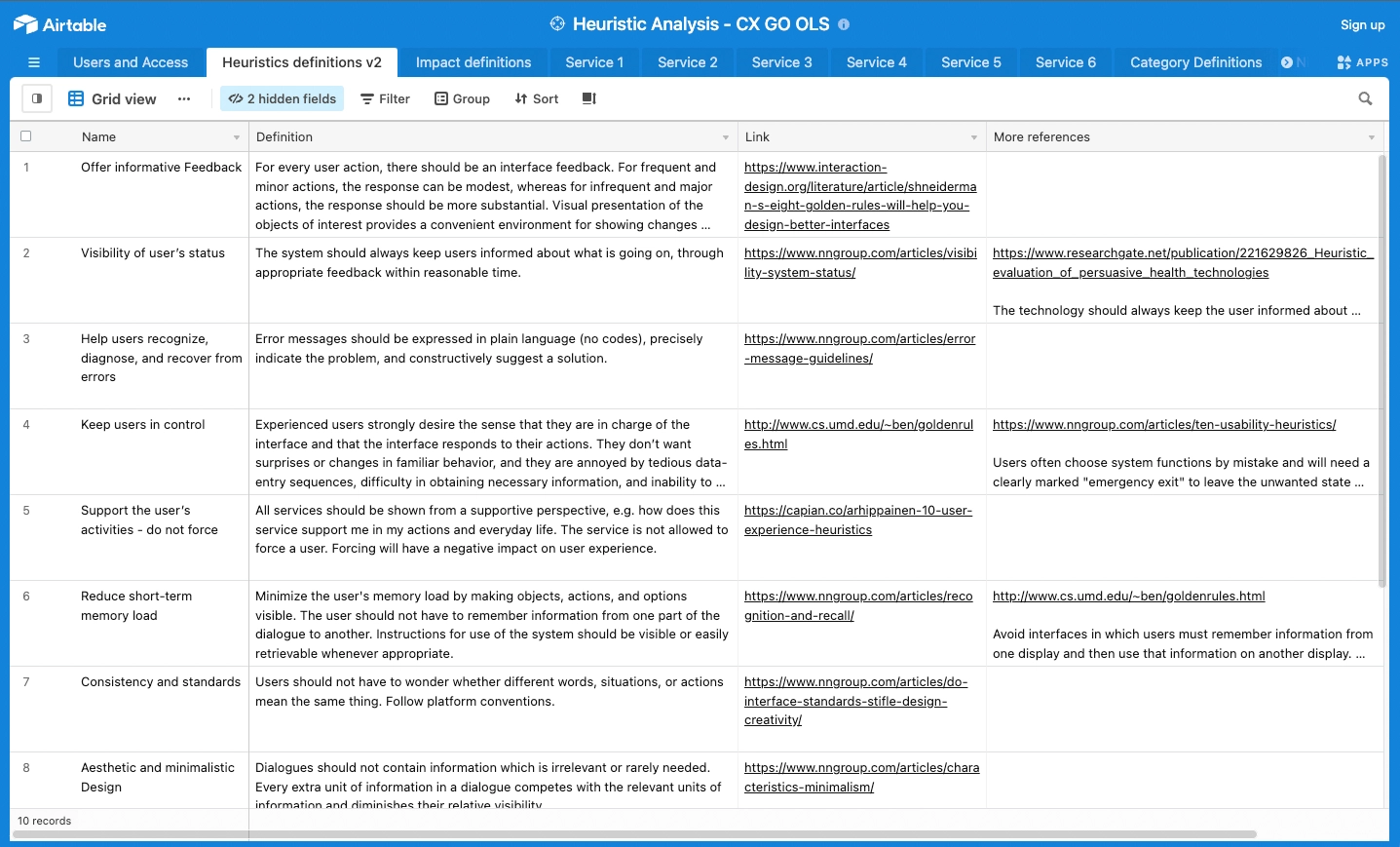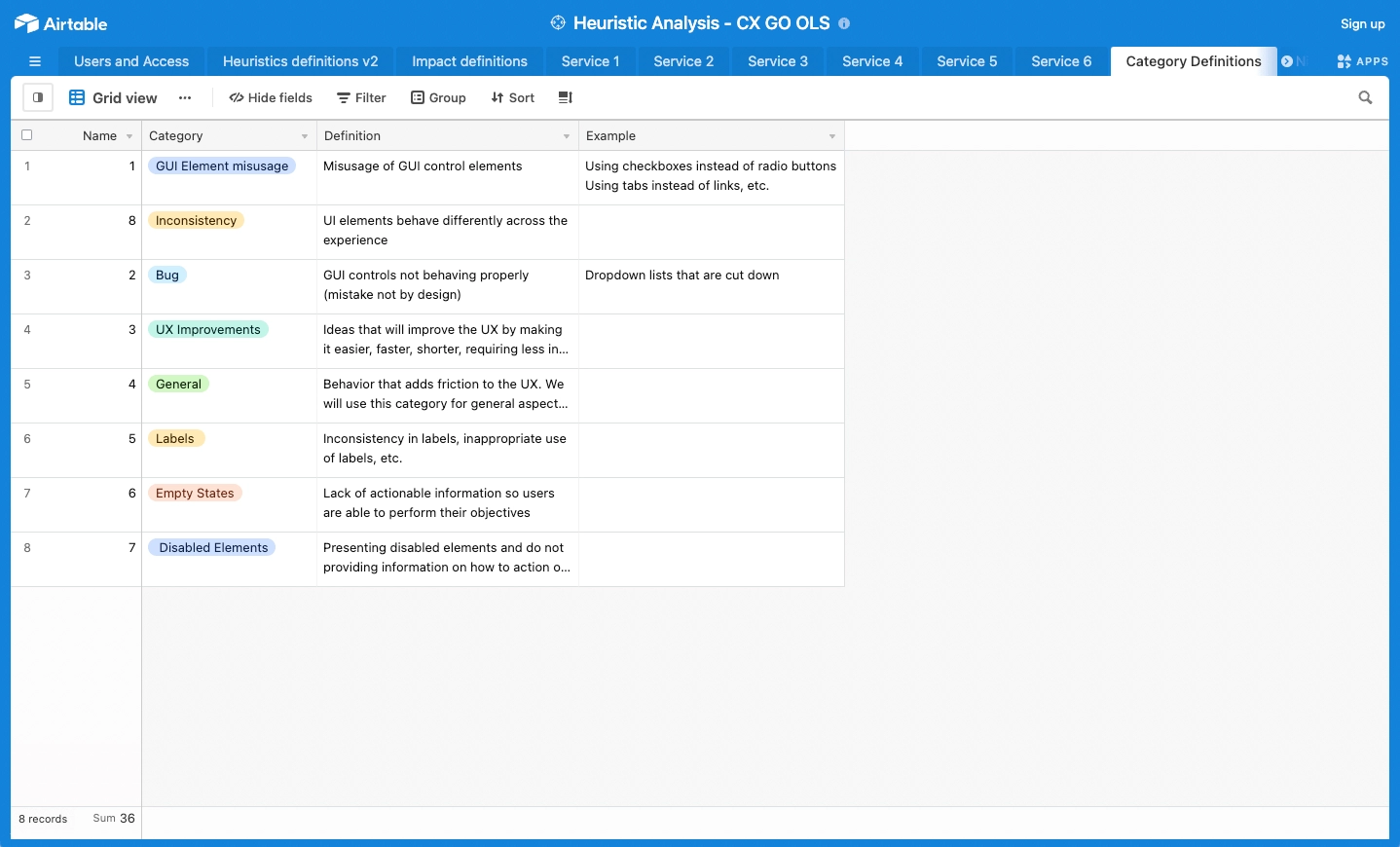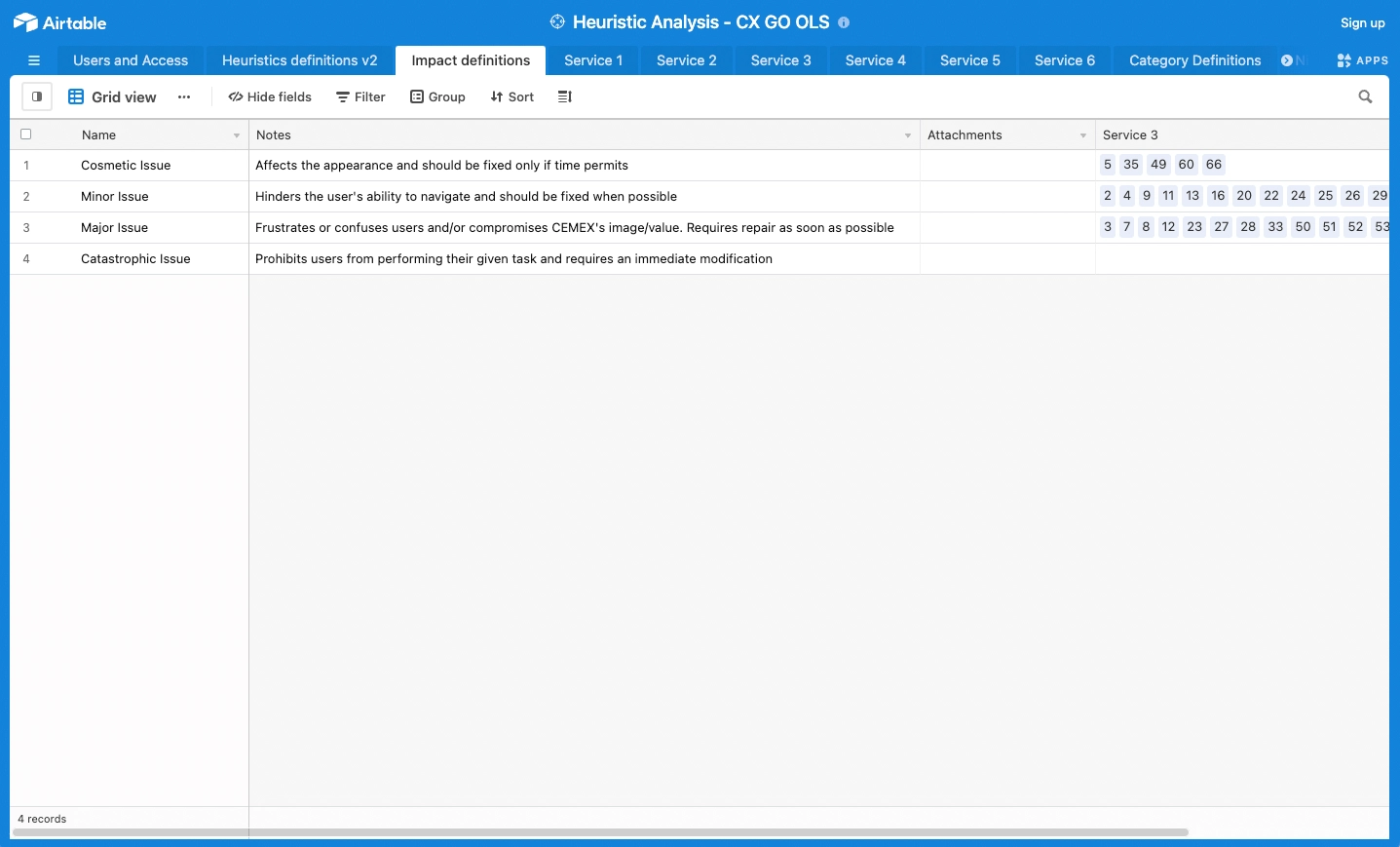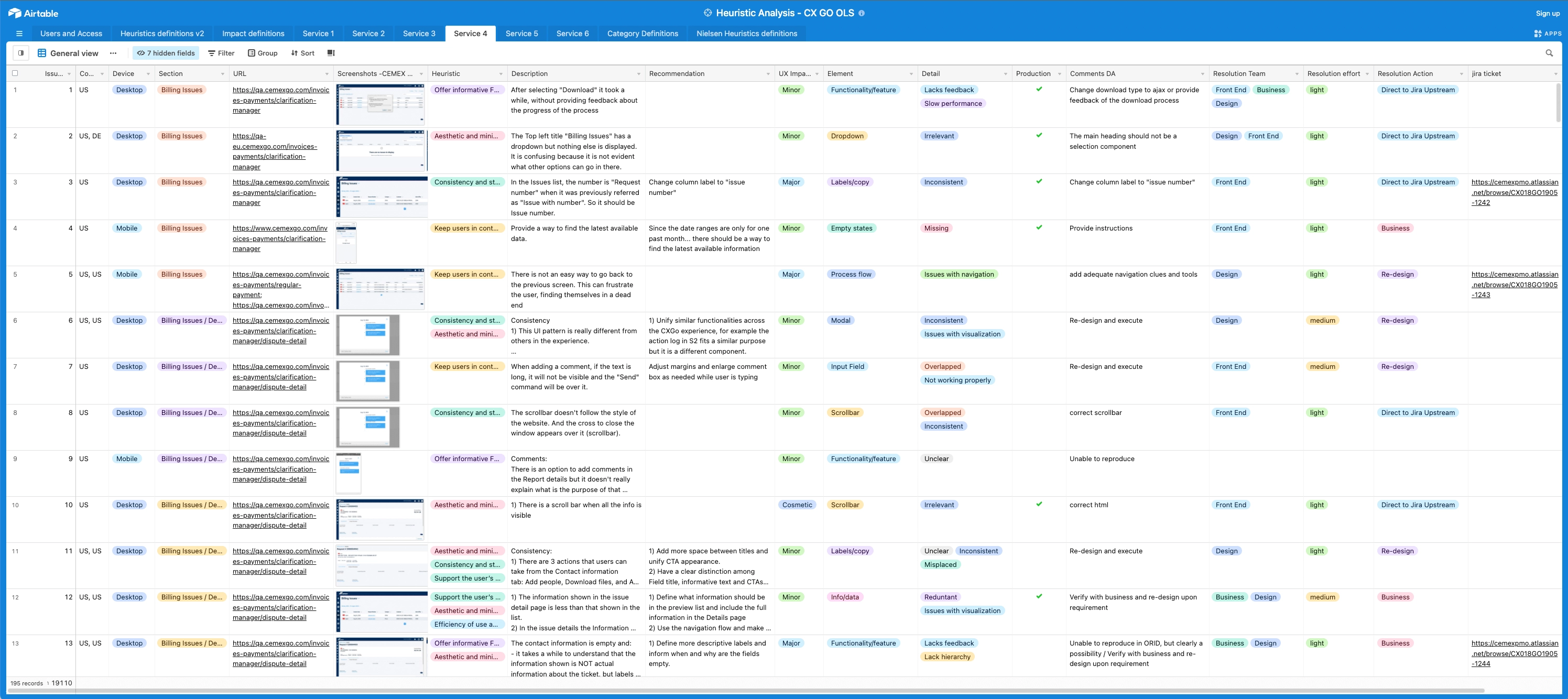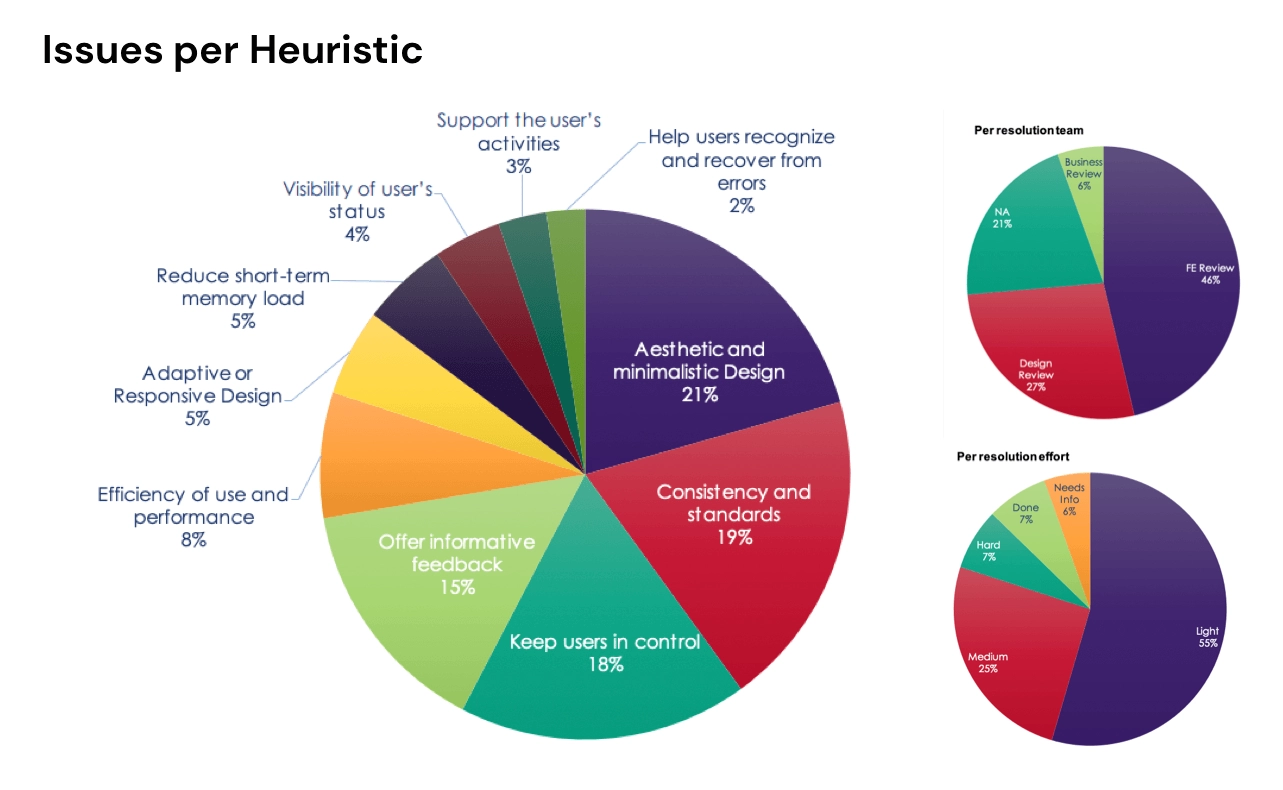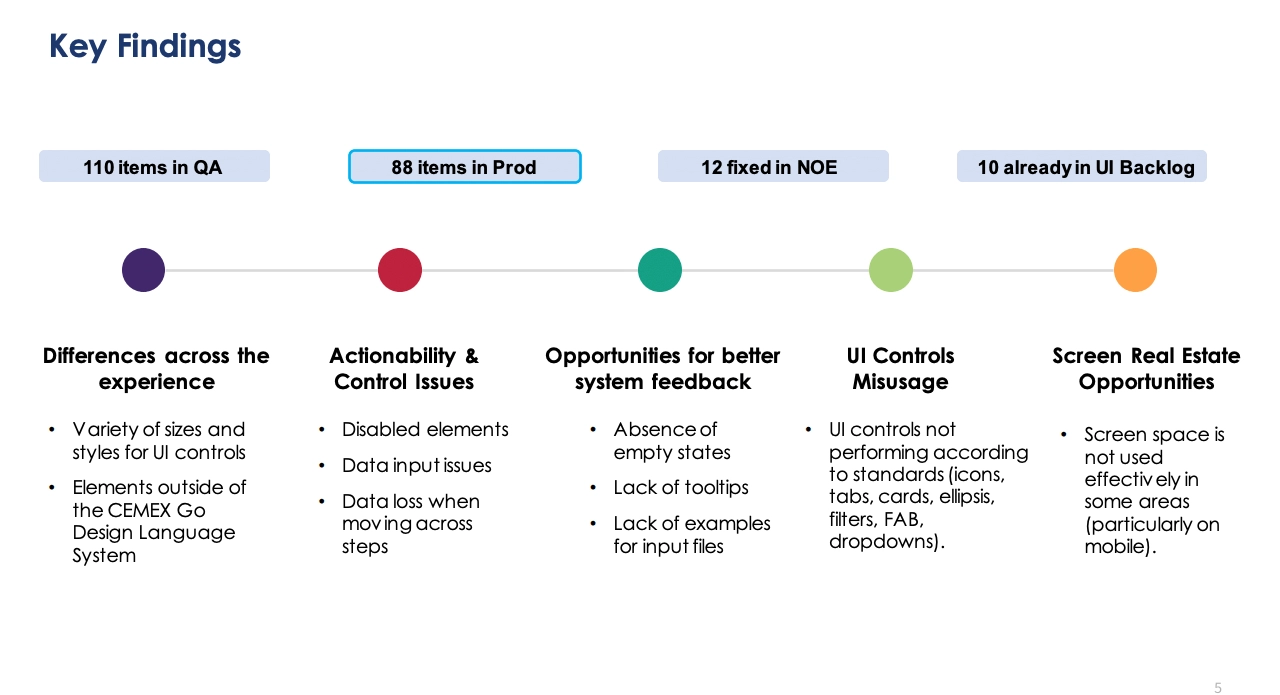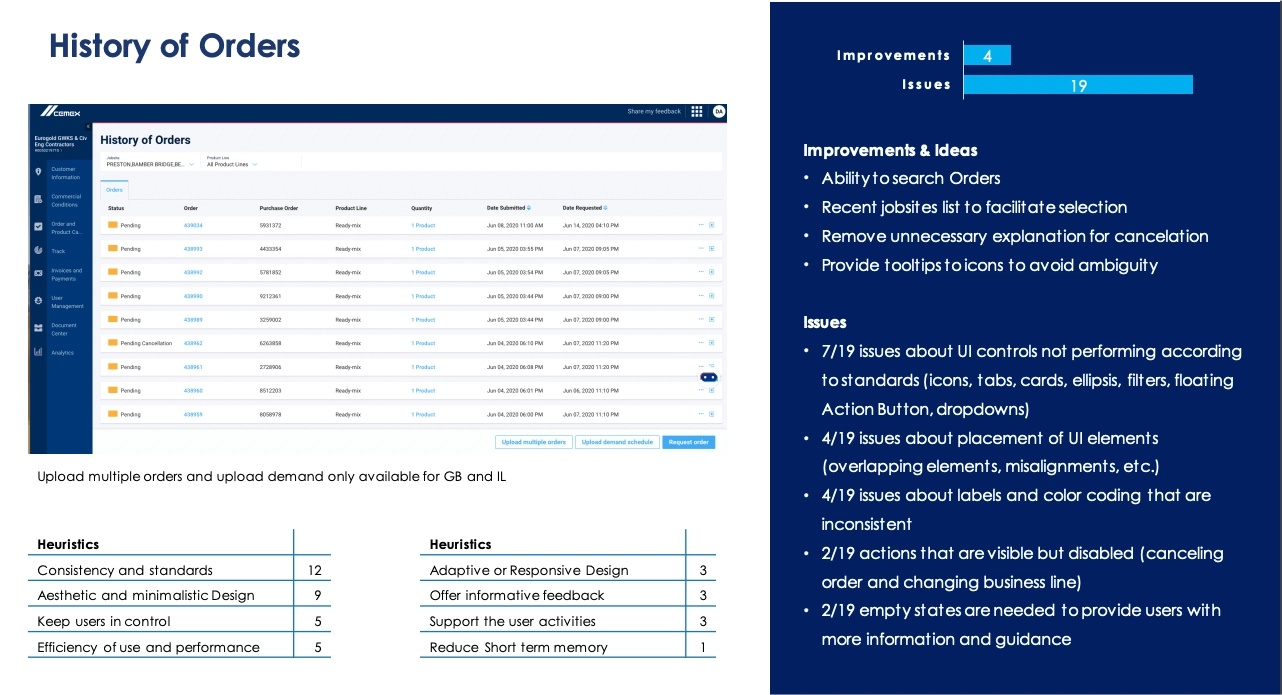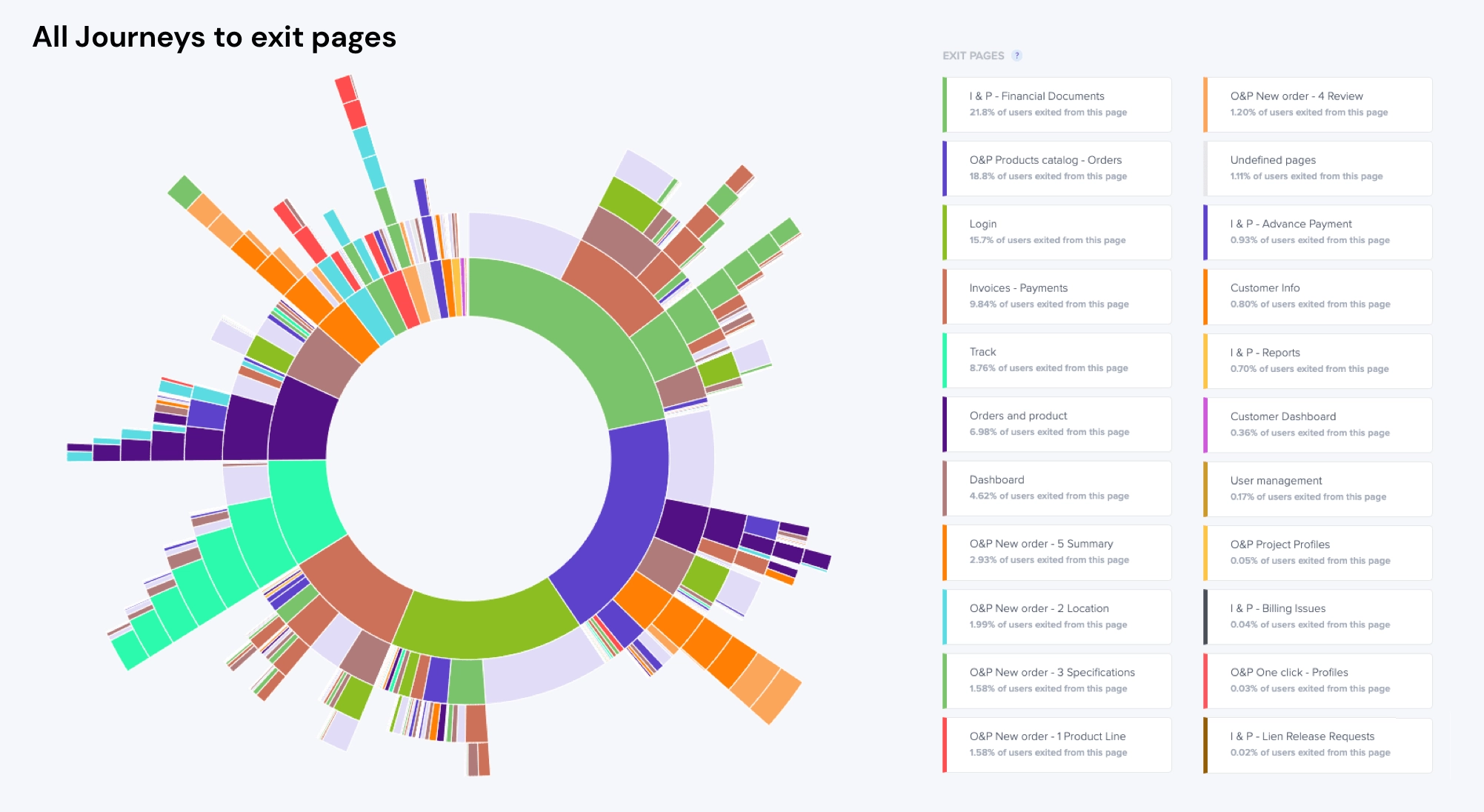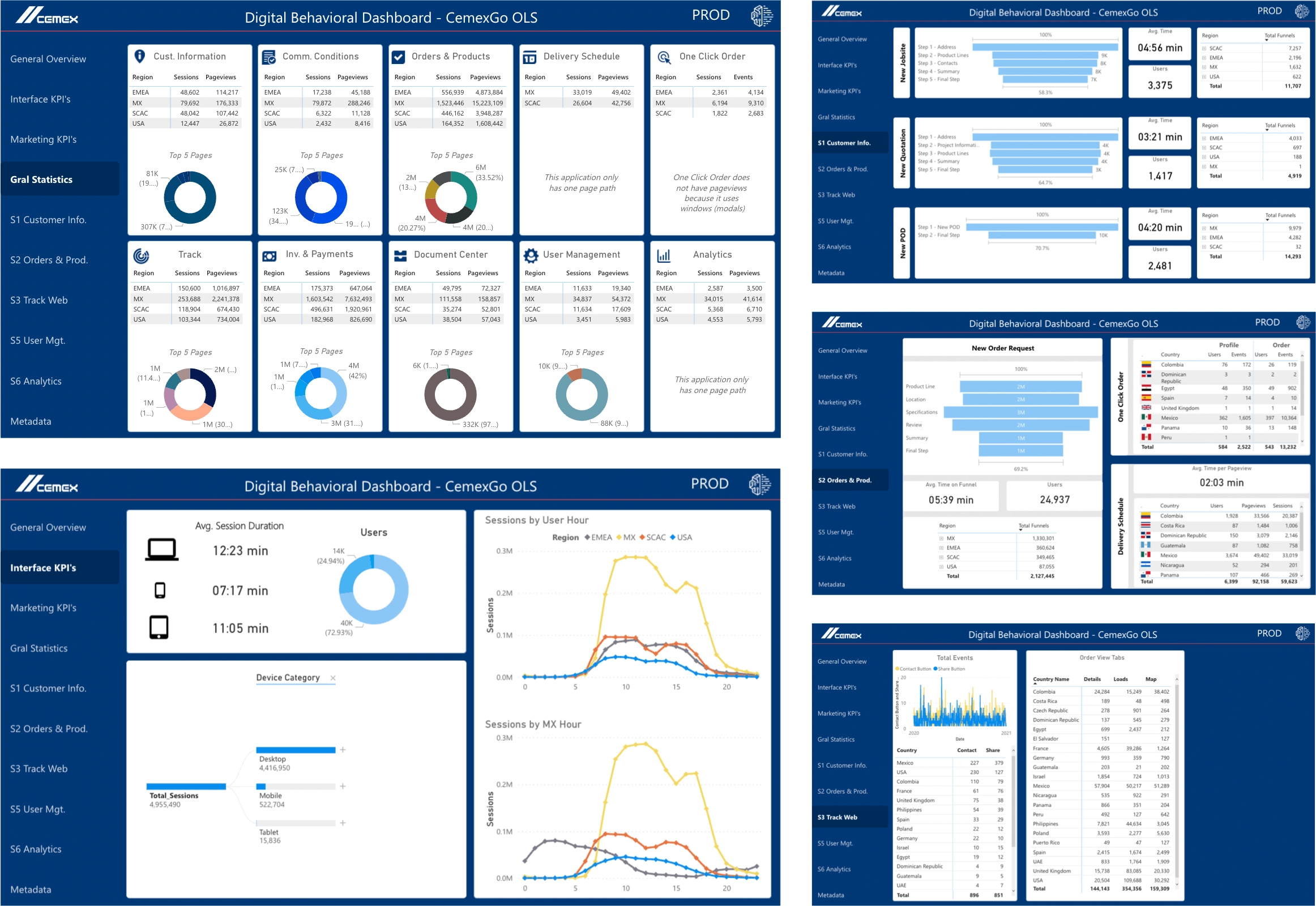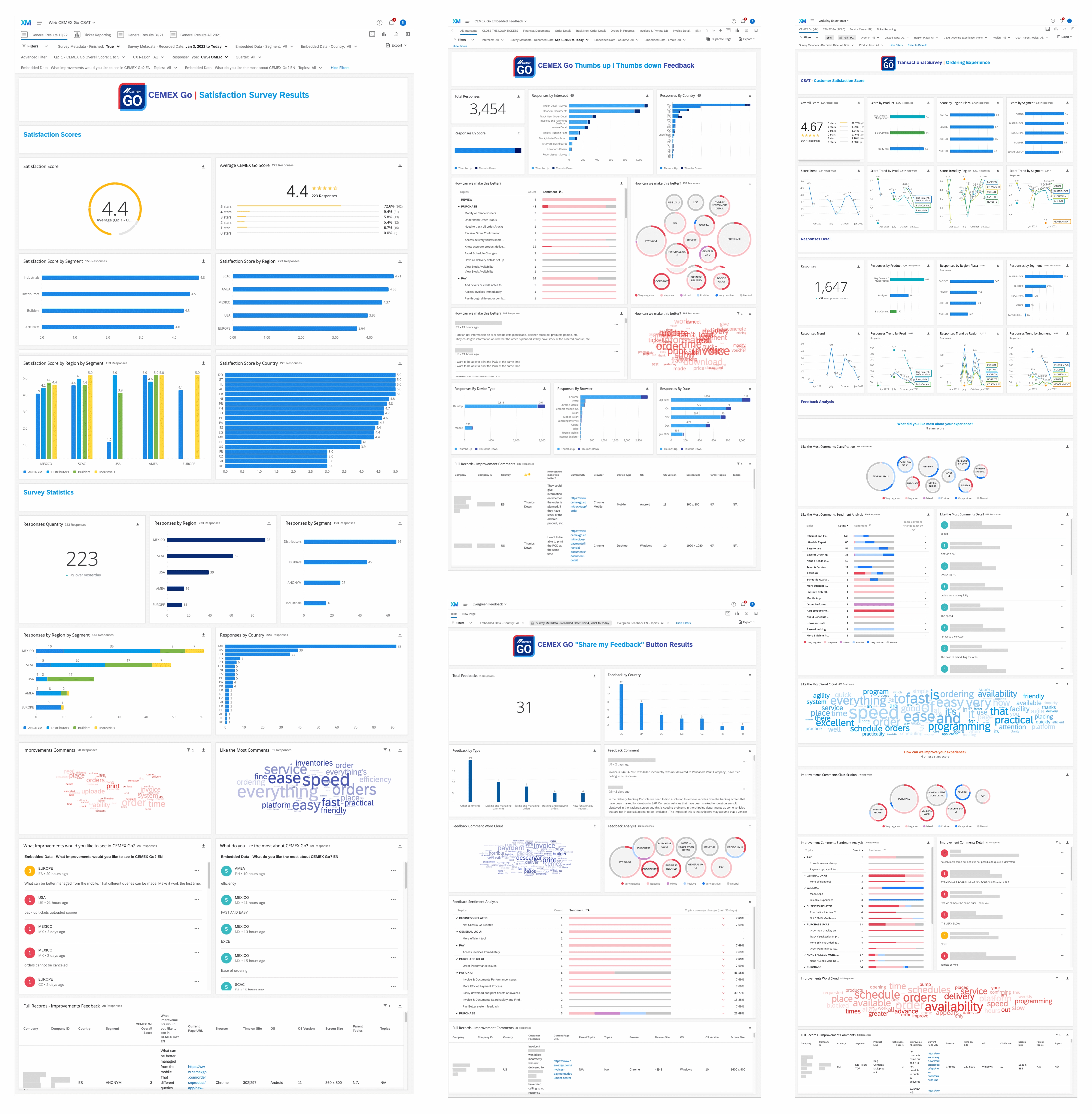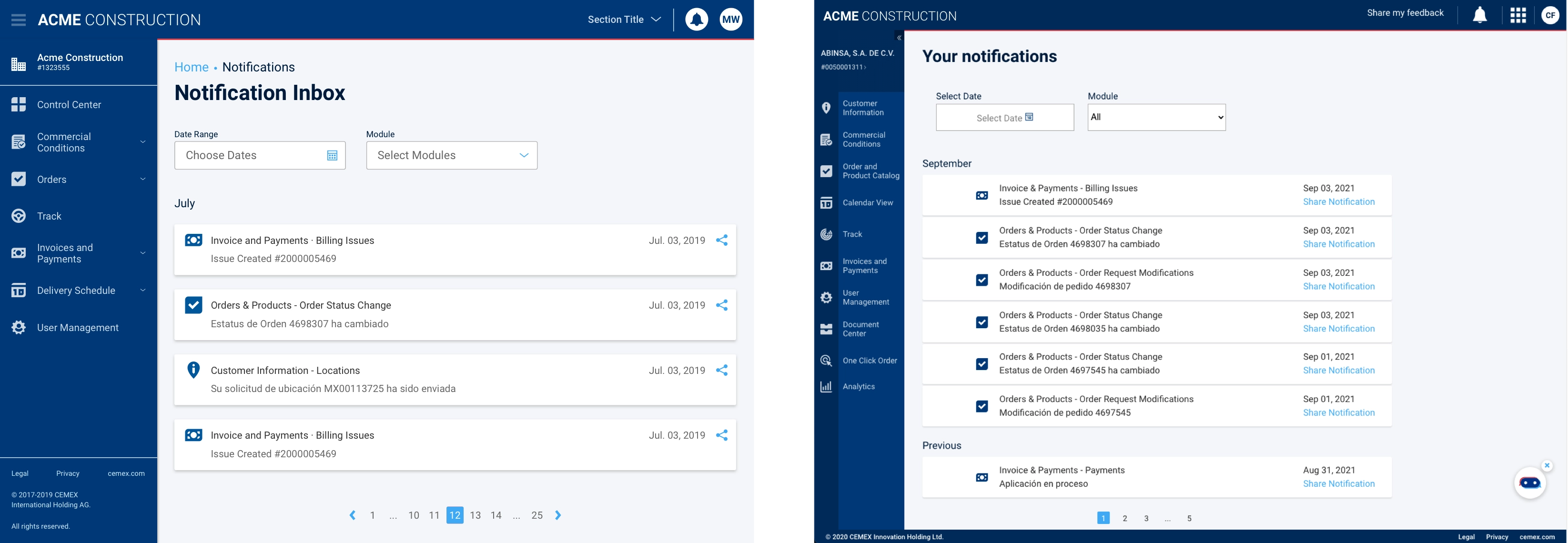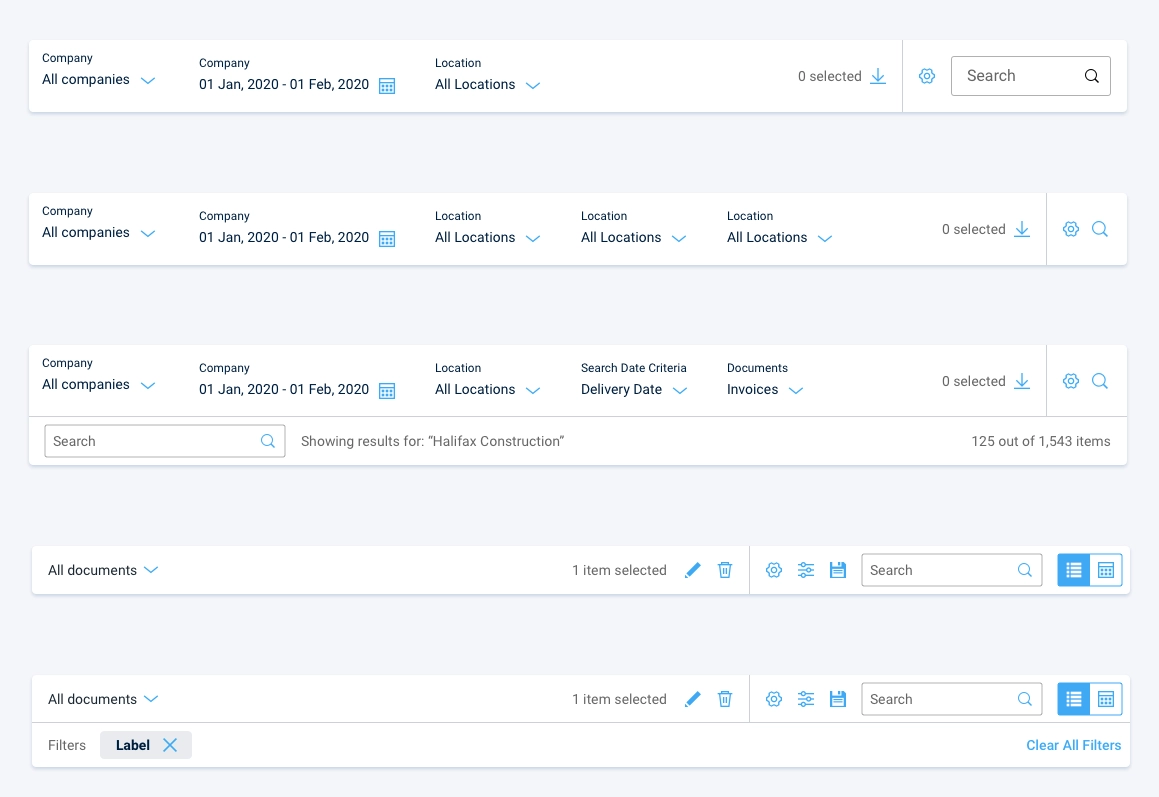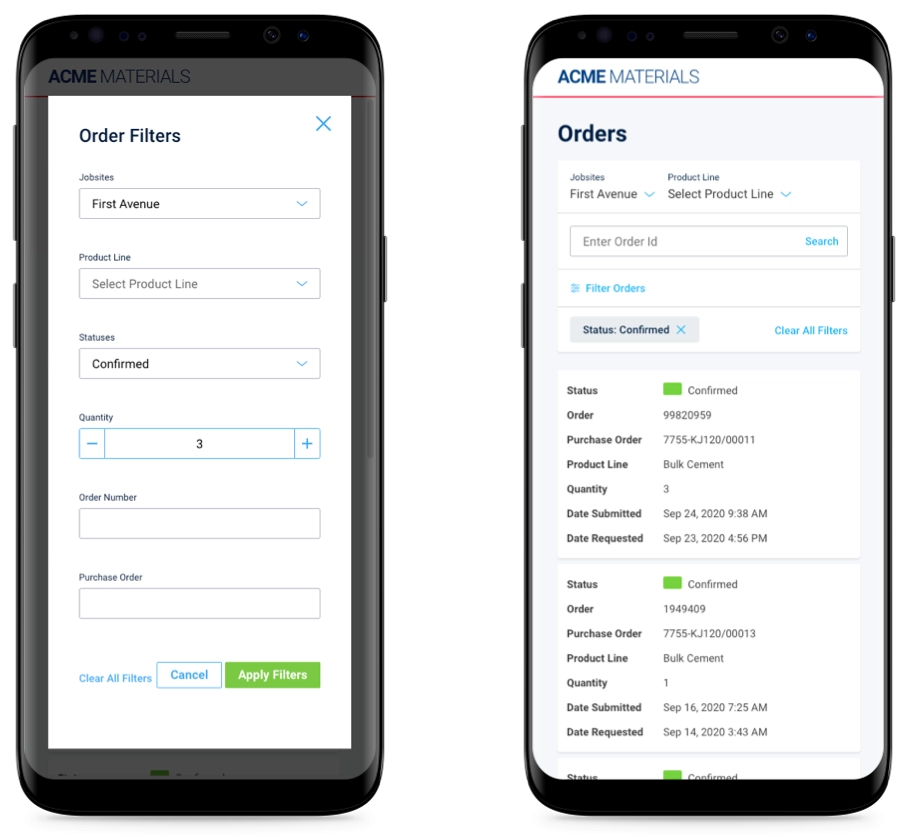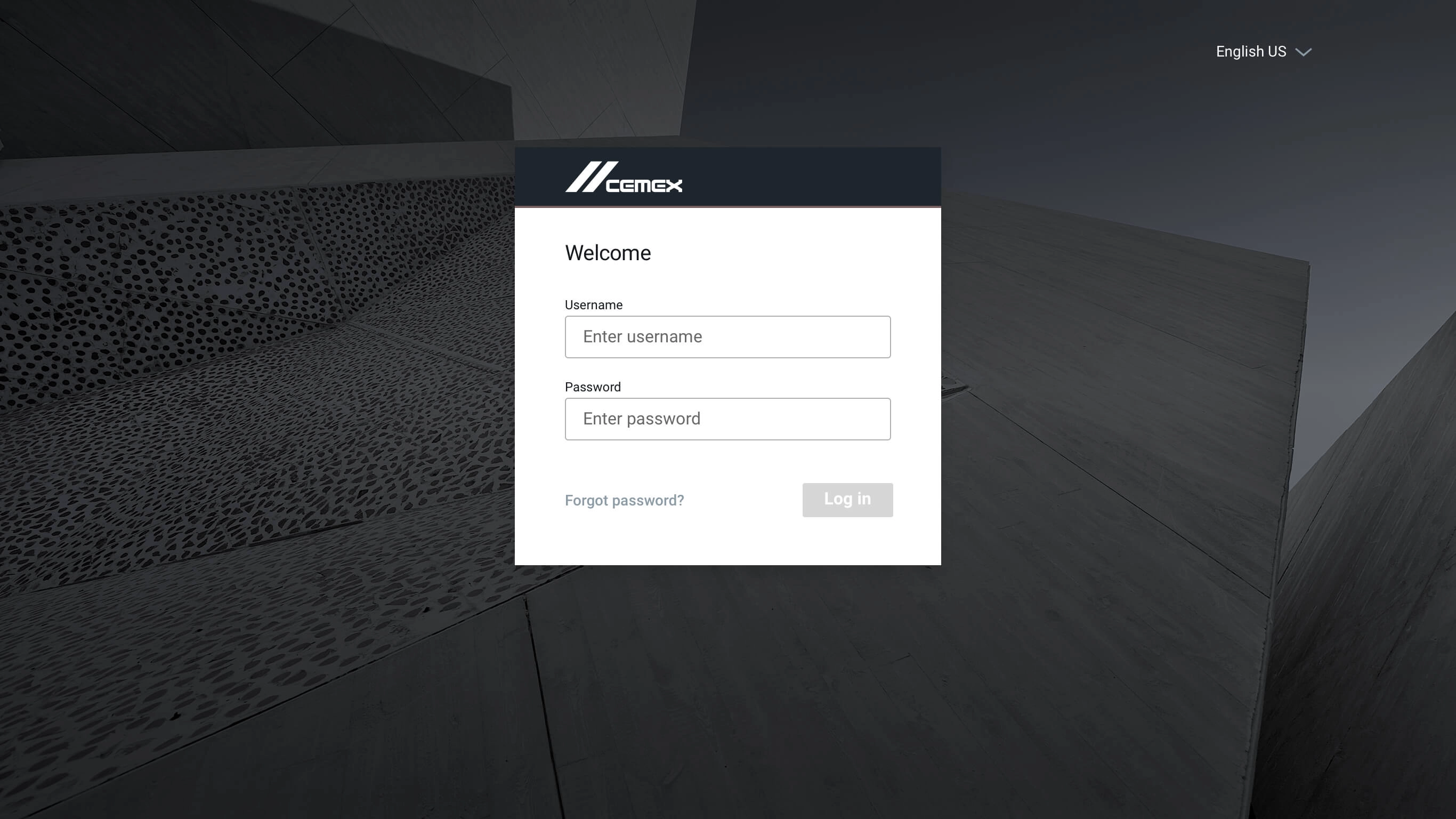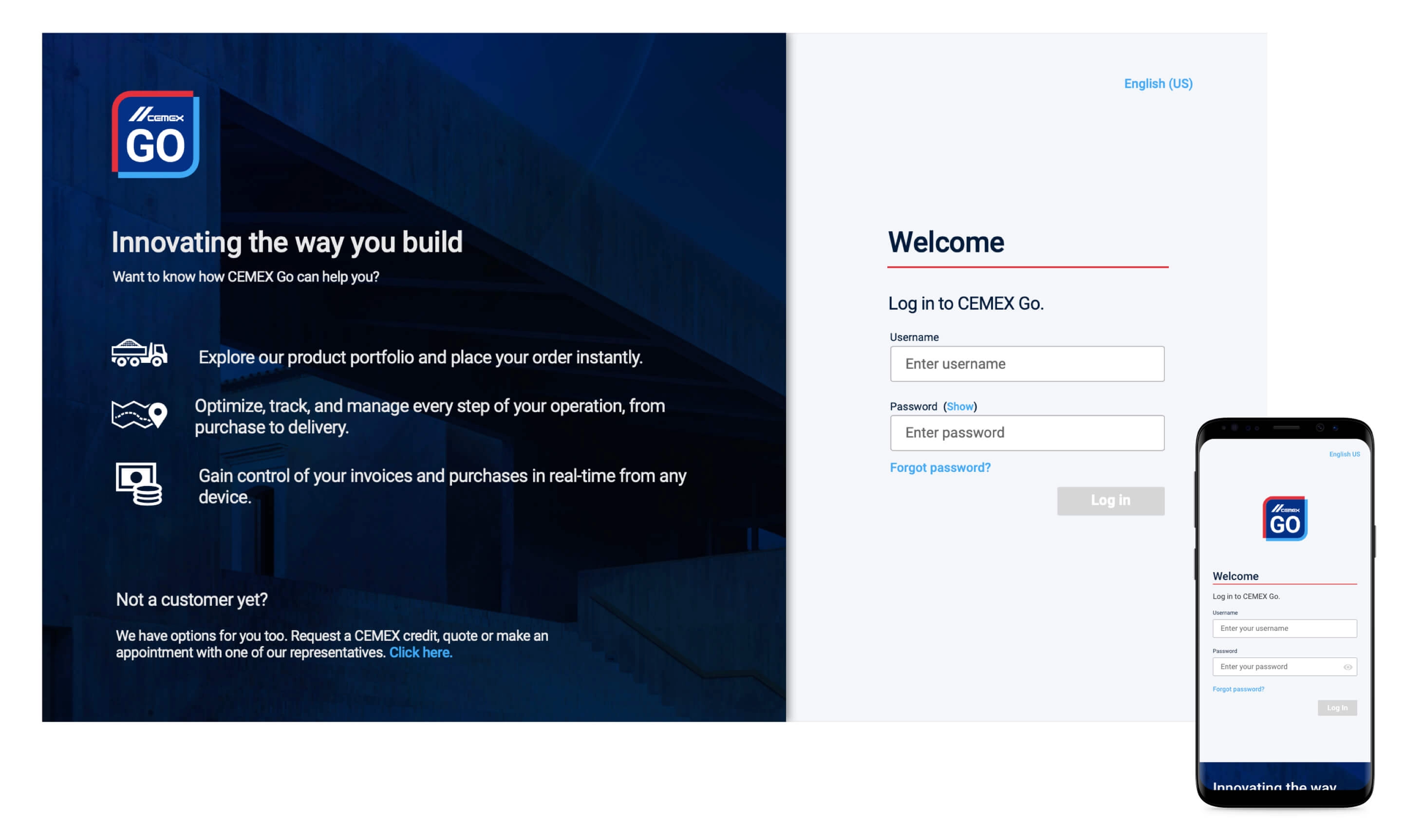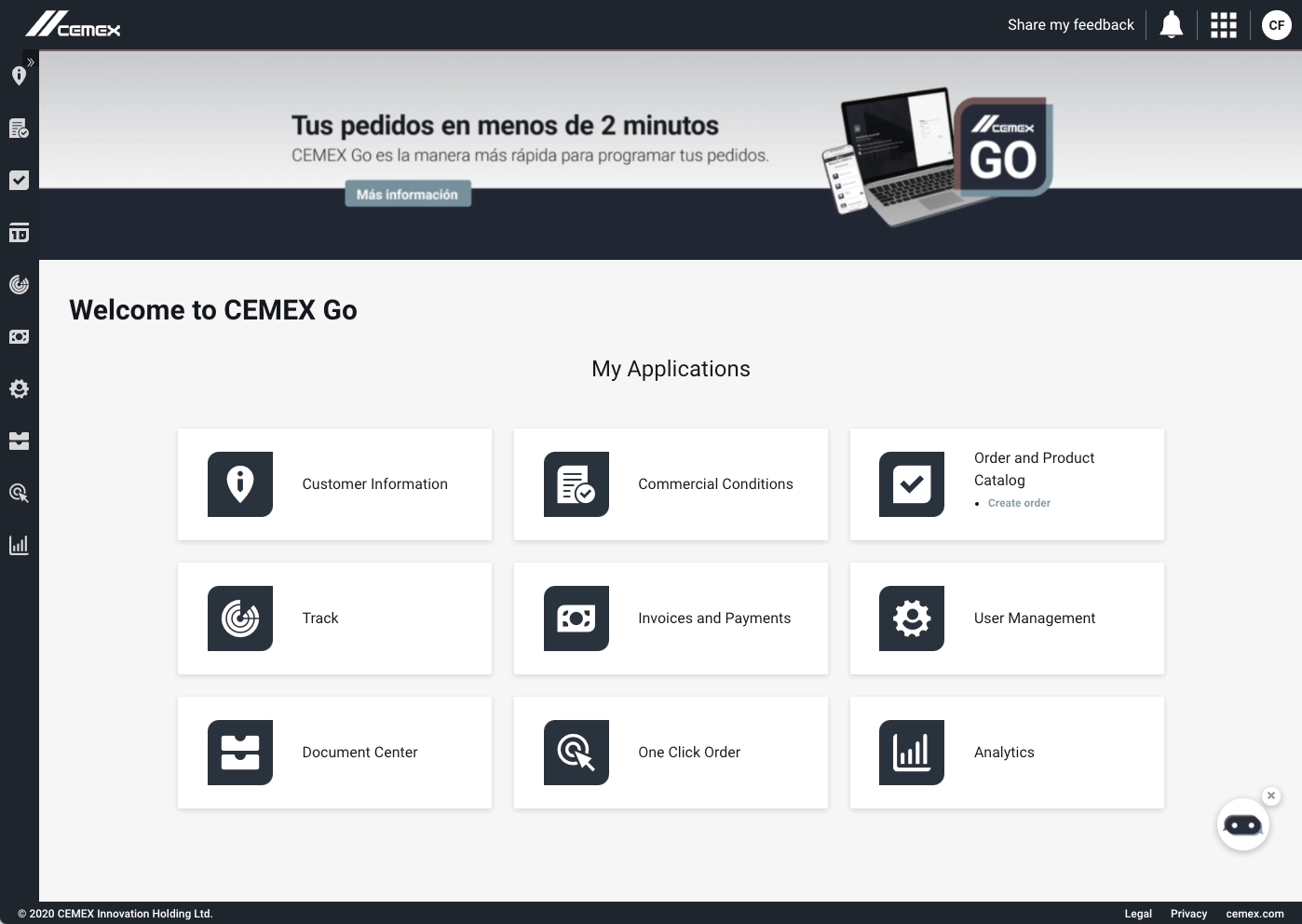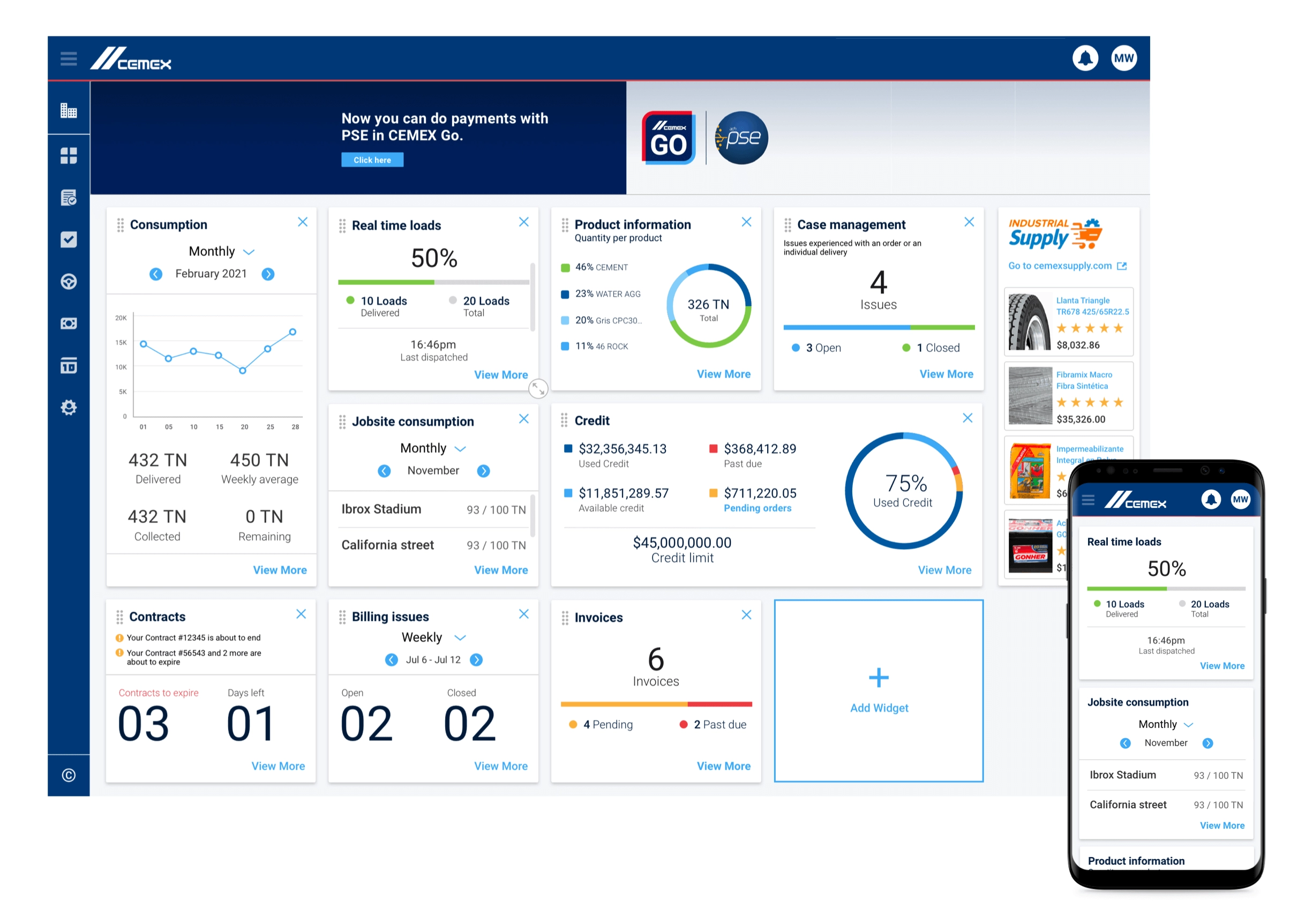Cemex Go (2017 - 2022)

CEMEX Go is a suite of applications that covers the touchpoints with our customers and their interaction with the company, the product and the services. This phase of my career as in Design Leadership is more about the processes setup within projects and organizations and less about proficiency in design craft.
Project Justification
- Digital transformation of the customer interaction and industrial process monitoring.
- Enhancement of the operation visibility towards the customers.
- Instant provision of all the assets derived from the products and services exchange.
- Overall Cost reduction of processes.
The takeover
I was given the responsibility to technically lead and organize our UX and Product Design practice as well as all the applications in the suite.
These were the issues present at the time:
- Projects rushed to MVP state.
- Creation driven by feature pileup which translated into subpar UX.
- Disconnect between the parts of the suite both in UX and architecture.
- Lack of processes to drive data informed decisions.
- Poor UI development.
Team and Responsibilities

Processes, processes, processes
The overhaul of the project had to be attacked on multiple fronts. A complete UX cycle approach had to be set. The evident tasks were:
- Complete revision of the project.
- Establishment of initial figures to benchmark against.
- Diversification of metrics besides behavioral.
- Homogenization of the user interface.
- Refinement and creation of important features.
Ready, Set, Heuristics
In order to create a systemic approach we conducted a heuristic evaluation through the whole suite:
- Categorized the results by severity, ease of resolution and actions to follow.
- Discussed the results with stakeholders, product management and product development to add an extra layer of insight and evaluation.
- Created epics and stories and enhanced of the documentation of issues.
- Funneled issues through our project management suite (JIRA) to provide adequate visibility to the entire product team and follow standard resolution procedures.
- Conducted periodical evaluation ceremonies to assess progress and identify risks as well as opportunities.
Benchmarking against ourselves
CEMEX is the pioneer in the digital transformation within industry. This means that we race against ourselves.
To set initial benchmarking figures we connected to all of the analytics sources spread amongst many teams and aggregated the information:
- Created reports from Google Tag Manager, Google Analytics and Contentsquare information.
- Generated hypotheses on abandonment, conversion gaps, overall use of features or lack thereof.
- Cross-referenced data with prior evaluation to validate hypotheses and associated failures with particular UX/UI findings.
- Added extra information to stories and epics and created new ones.
If it can't be measured, it doesn't exist.
Attitudinal UX metrics weren't being collected and customer interactions driven by Project Managers weren't documented properly resulting in incomplete and unstructured comments and opinions as source of truth. Here's the tasks we took to overcome this.
- Diversification of collection channels for attitudinal metrics.
- Definition of proper standards for elicitation and documentation.
- Insertion of CSAT questionnaires, binary thumbs up/down surveys and open feedback forms all across the platform.
- Creation of dashboards to structure and visualize the information.
- Created tools and training for non-research players to properly conduct and document user interactions.
Soon enough the importance of having UX and Product Design interacting directly with users became evident, and it is a common occurrence nowadays.
UI Standardization
We identified that front-end developers weren't doing a proper job translating the designers intent. This resulted in less than optimal UI denting the overall user experience.
In order to correct this situation many actions were taken:
- Retrofitted the latest spec of our Design System within the applications.
- Created an inventory of common interactions across the suite.
- Defined interaction systems and patterns to cater to inventory groups.
Interaction patterns and systems development process
Owning the presentational layer
The complete execution of the UI Technical Debt is still ongoing and our team has now direct influence through our UX Development team, which answers specifically to these concerns.
We were also granted the authority to prevent work to be marked as done without prior revision from the responsible designer or the Design Authority. This shifted the responsibility of the UX/UI/Flow entirely to our team and had as a consequence that developers crafted the UI more carefully and with better quality.
Moving towards new features
Defined processes and clear understanding of user needs derived by proper research has allowed us to set adequate focus and elevate the overall perception of quality of our products.
Here are a few examples of before and after that we have taken care of.
The graduation
The shift CEMEX has taken from a PM driven shop to put User Experience Design front and center has paid off with quality as the main consequence.
The organization has realized the huge growth in conversions when the UX process drives the creative efforts.
The shift, which has taken 5 years and a lot of change management, has given the company an adequate perspective on the relationship with customers today and for the times to come.
